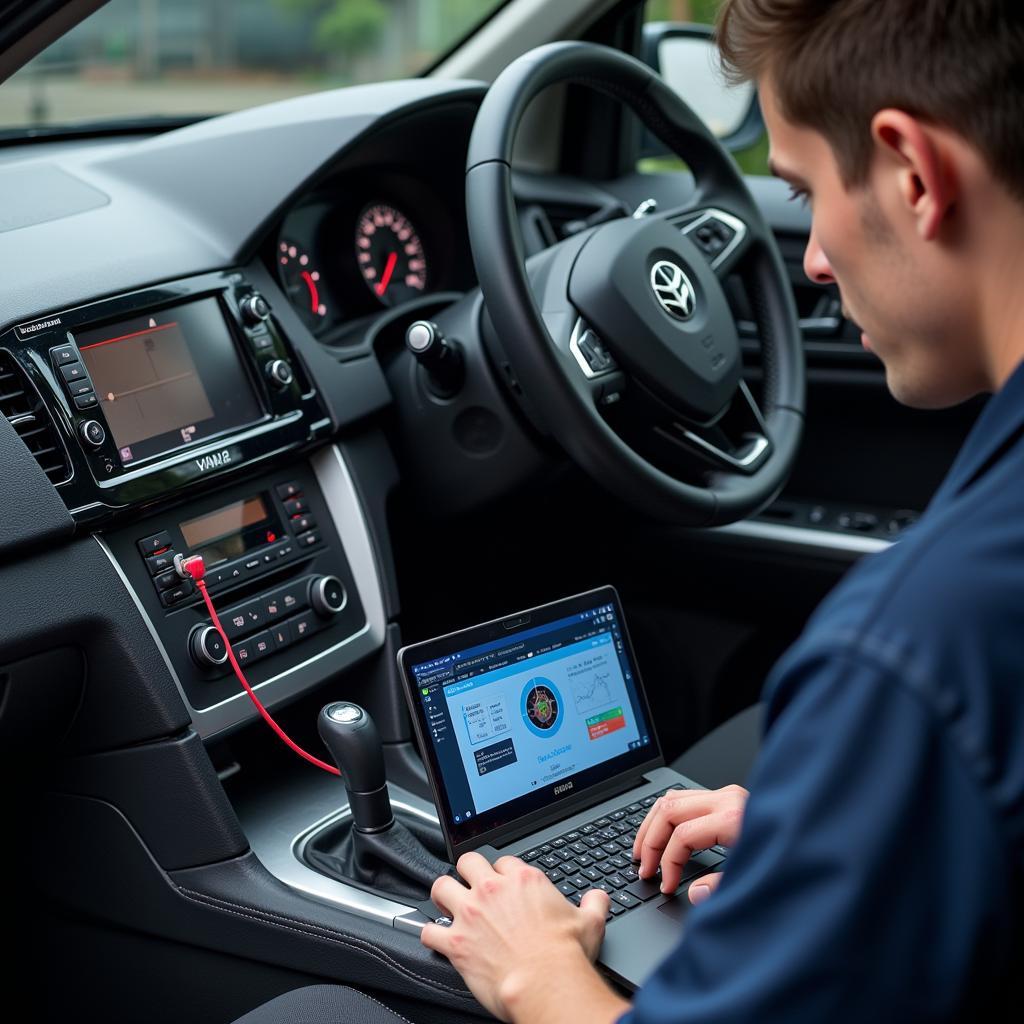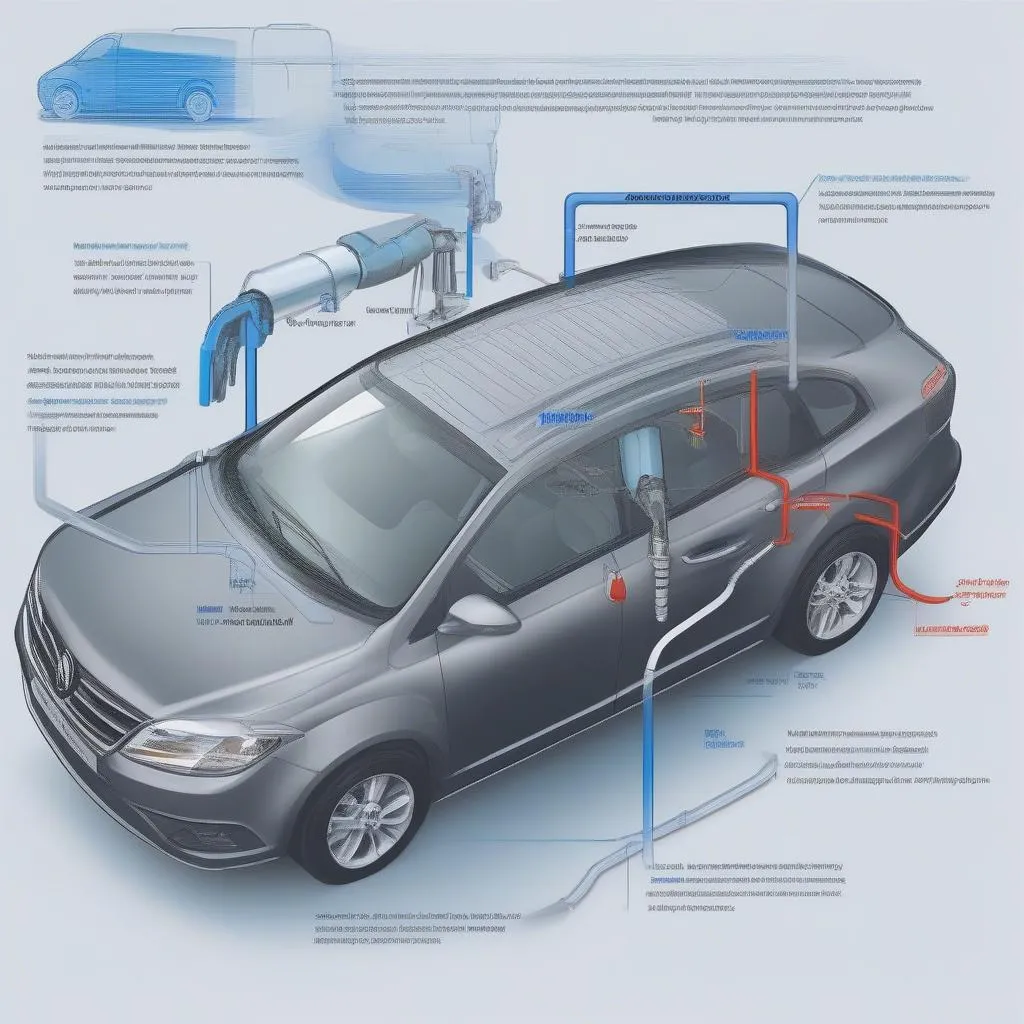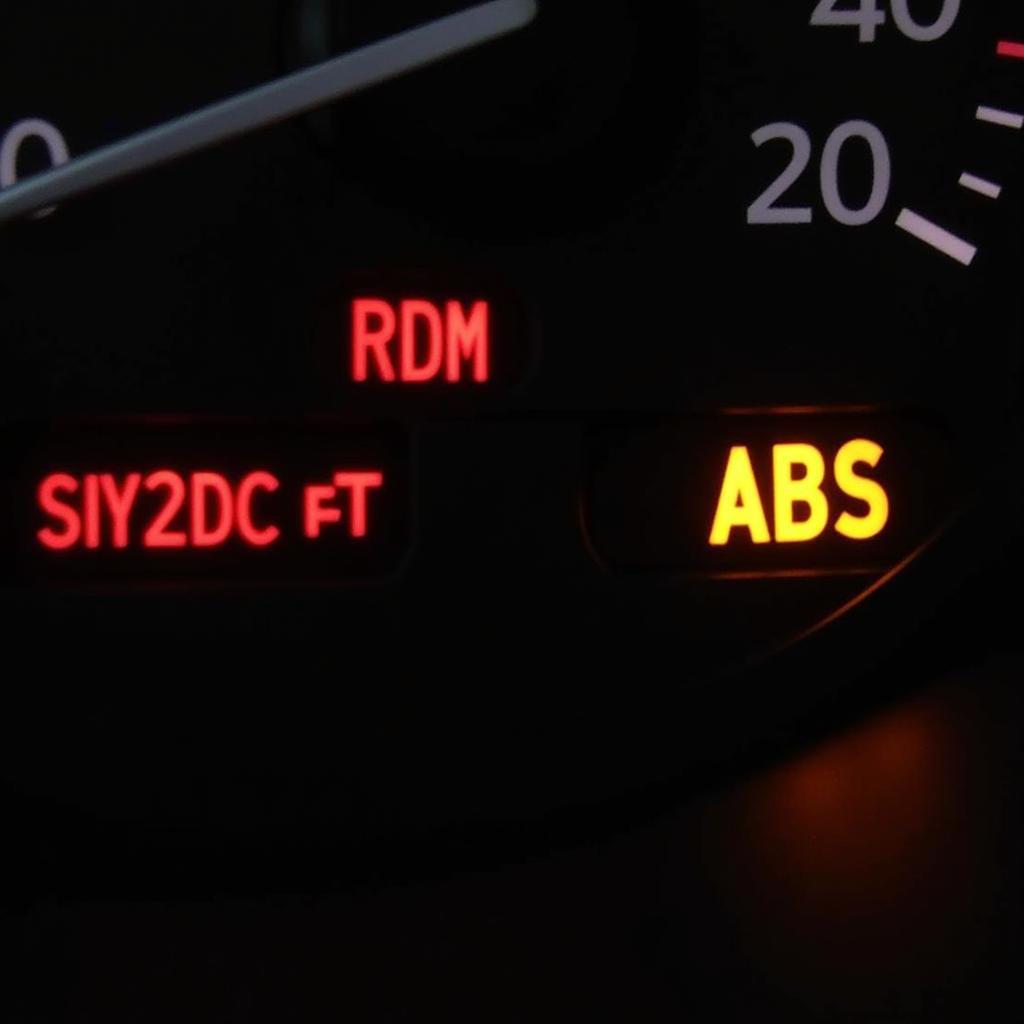The amber brake warning light on your car’s dashboard can be a source of anxiety. It signals a potential issue with your braking system, requiring immediate attention. This article will guide you through the possible causes, diagnostic procedures, and potential solutions for an illuminated amber brake warning light, helping you understand what it means and what actions to take.
What Does the Amber Brake Warning Light Mean?
An illuminated amber brake warning light typically indicates a less severe issue than a red brake warning light. While it still requires attention, it often doesn’t necessitate immediate stopping. However, continuing to drive with an illuminated amber brake light could potentially worsen the underlying issue and lead to more serious problems. It’s crucial to investigate the cause as soon as possible.
Common Causes of an Amber Brake Warning Light
- Low Brake Fluid: This is the most common cause. Low brake fluid can significantly compromise braking performance. Check your brake fluid reservoir and top it off if needed. If the fluid level drops frequently, there might be a leak somewhere in the system.
- ABS Issue: The amber light can also signal a problem with the Anti-lock Braking System (ABS). While your conventional brakes may still function, the ABS might be deactivated, reducing control in slippery conditions.
- Parking Brake Engaged: Sometimes, the amber light illuminates simply because the parking brake is partially engaged. Ensure the parking brake is fully released.
- Faulty Sensor: A malfunctioning sensor in the braking system can also trigger the amber warning light. This requires professional diagnostics to pinpoint the faulty sensor.
- Worn Brake Pads: While some vehicles have a separate warning light for worn brake pads, others might use the amber brake warning light. Check the thickness of your brake pads.
Diagnosing the Amber Brake Warning Light
If the parking brake is not engaged and the brake fluid level is adequate, further diagnosis is required. Modern vehicles often store diagnostic trouble codes (DTCs) related to the braking system. A professional diagnostic scan tool can retrieve these codes and provide valuable clues about the issue.
Using Remote Diagnostics and Programming
Remote diagnostics and programming can be a valuable tool for resolving amber brake warning light issues. This allows a qualified technician to access your vehicle’s data remotely, analyze DTCs, and sometimes even perform software updates or calibrations that might address the problem. This approach can save you time and money compared to traditional garage visits.
 Remote Diagnostics of Car Brake System
Remote Diagnostics of Car Brake System
How to Fix the Amber Brake Warning Light
Depending on the cause, the solution to an amber brake warning light can range from simple DIY fixes to more complex repairs requiring a professional mechanic.
- Check the Parking Brake: Make sure the parking brake is fully disengaged.
- Top off Brake Fluid: If the fluid level is low, carefully add the correct type of brake fluid to the reservoir. Consult your owner’s manual for the recommended fluid type.
- Inspect for Leaks: Carefully examine the brake lines and components for any signs of leaks. If you find a leak, seek professional repair immediately.
- Check Brake Pads: Inspect the brake pads for wear. If they are thin, replace them as soon as possible.
- Seek Professional Help: If the problem persists or you suspect an ABS or sensor issue, take your vehicle to a qualified mechanic. They can perform a thorough diagnosis and recommend the necessary repairs.
Conclusion
An amber brake warning light shouldn’t be ignored. While it might not indicate an immediate emergency, it signals a potential problem with your braking system that requires prompt attention. By understanding the common causes, utilizing remote diagnostic capabilities, and following the troubleshooting steps outlined in this article, you can effectively address the issue and ensure your safety on the road. Ignoring the warning light could lead to more serious brake problems and compromise your driving safety.
FAQ
- Is it safe to drive with an amber brake warning light? While it might be possible to drive short distances, it’s not recommended. Get it checked as soon as possible.
- Can I fix an amber brake warning light myself? Simple fixes like topping off brake fluid can be done at home. However, more complex issues require professional attention.
- How much does it cost to fix an amber brake warning light issue? The cost varies depending on the underlying cause, ranging from a few dollars for brake fluid to potentially hundreds for more complex repairs.
- What is the difference between an amber and red brake warning light? An amber light typically indicates a less severe issue, while a red light signifies an immediate and serious braking problem.
- Can remote diagnostics fix my amber brake warning light? In some cases, remote diagnostics can identify and even fix software-related issues. However, physical repairs will still require a mechanic.
- How often should I check my brake fluid level? Checking your brake fluid level monthly is good practice.
- What should I do if my amber brake warning light flashes? Flashing lights typically indicate a more urgent problem, often related to the ABS. Seek professional help immediately.


